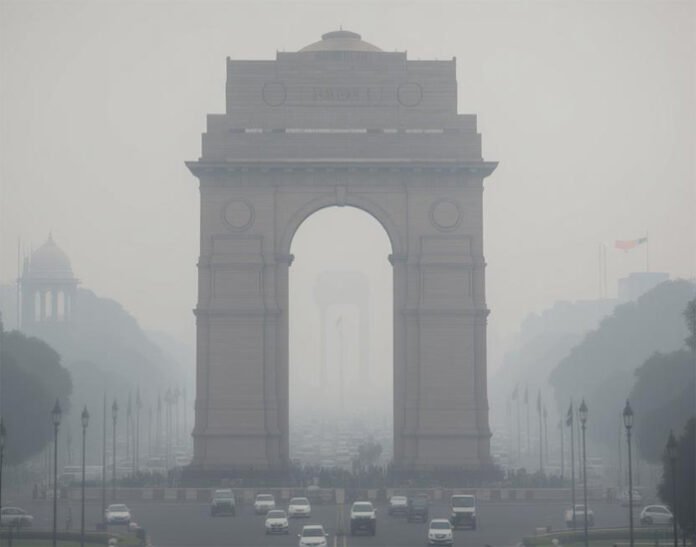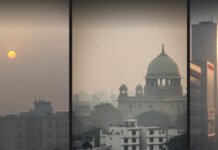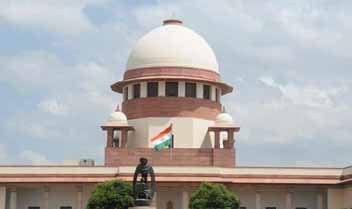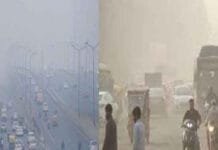New Delhi | November 5, 2025 — Environment & Public Health Update
Despite a brief dip in early November, Delhi-NCR’s air quality crisis remains severe, with official data showing the National Capital Region topping the charts among India’s most polluted zones last month.
According to Central Pollution Control Board (CPCB) figures, Delhi ranked as the 6th most polluted Indian city in October 2025, while Ghaziabad and Noida claimed the 3rd and 4th positions, respectively. Average PM2.5 concentrations were nearly three times higher than in September, largely driven by post-harvest stubble burning, vehicular emissions, and construction dust.
“October’s spike was sharp and consistent. Even with temporary relief from rainfall, the pollutant load never normalized,” said a senior CPCB scientist.
📊 Air Quality Snapshot: NCR vs. National Average
| City | Avg PM2.5 (Oct 2025) | Change vs. Sept 2025 | National Rank |
|---|---|---|---|
| Ghaziabad | 189 µg/m³ | +182% | 3rd |
| Noida | 181 µg/m³ | +176% | 4th |
| Delhi | 174 µg/m³ | +165% | 6th |
| Gurugram | 168 µg/m³ | +152% | 8th |
Source: Central Pollution Control Board (CPCB), SAFAR India
🌤️ Temporary Relief — and Fast Rebound
On November 4, 2025, Delhi’s Air Quality Index (AQI) clocked at 291, marking its cleanest November 4 in seven years, thanks to light showers and northwesterly winds.
However, air quality deteriorated again by November 5 morning, with AQI readings crossing 350 (very poor) in Anand Vihar, Jahangirpuri, and parts of Gurugram.
“The relief was short-lived. Stubble burning in Punjab and Haryana picked up again, and calm wind patterns trapped pollutants,” said Dr. Gufran Beig, project director at SAFAR.
🔍 Key Factors Behind the Spike
Stubble Burning: Satellite data from ISRO detected over 2,600 fire incidents in Punjab-Haryana between Oct 25–Nov 3.
Vehicle Emissions: NCR recorded 15% higher diesel usage due to festival traffic and logistics activity.
Construction Dust: Ongoing metro expansion and highway projects added localized dust emissions.
Weather Shift: Falling temperatures and reduced wind speeds intensified smog retention.
🏛️ Government and Court Response
The Commission for Air Quality Management (CAQM) has directed NCR industries to switch to clean fuels immediately and restricted construction under GRAP Stage IV protocols.
Meanwhile, the Supreme Court is monitoring state compliance, especially with Punjab’s crop-residue management programs.
Delhi Chief Minister Arvind Kejriwal urged citizens to “avoid unnecessary travel” and announced emergency smog towers and water-sprinkling schedules across major roads.
🌍 Expert Outlook
Environmental experts warn that AQI fluctuations in early November may mislead the public. Despite daily variability, long-term averages remain in the ‘Severe’ range, posing chronic health risks.
“Seasonal volatility doesn’t mean improvement — it just masks cumulative exposure,” said Anumita Roychowdhury, Centre for Science and Environment.















